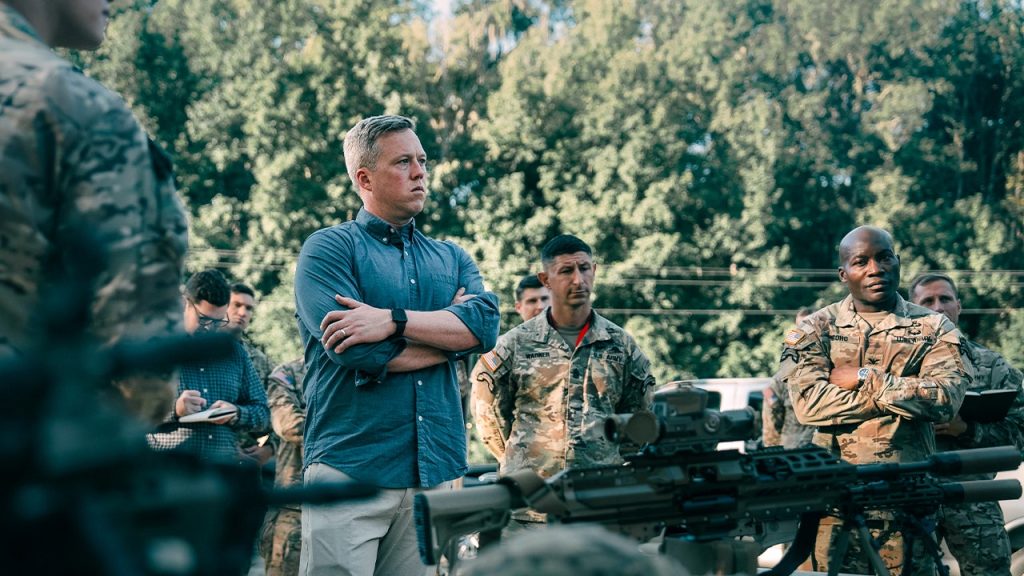The Modern Army: Adapting to New Threats and Challenges in a Rapidly Changing World
The U.S. Army is undergoing a remarkable transformation as it faces the dual challenges of emerging battlefield technologies and shifting global threats. In a revealing interview with Fox News Digital, Army Secretary Dan Driscoll shared how soldiers—particularly elite units like the 75th Ranger Regiment—are taking procurement into their own hands to stay ahead of rapidly evolving threats. At Hunter Army Airfield in Savannah, Georgia, Driscoll witnessed Rangers using government credit cards to purchase and test commercial drones and equipment, bypassing the Pentagon’s traditionally slow acquisition process. “They’ll do a lot of that outside the traditional procurement process. That flexibility lets them innovate and test at a speed that’s just really hard to do in the conventional force,” Driscoll explained. This grassroots innovation reveals both the ingenuity of American soldiers and the urgency of adapting to a battlefield where cheap, accessible technology has dramatically changed the nature of combat.
The widespread proliferation of affordable battlefield technology has fundamentally altered how even America’s most elite units operate. Driscoll noted that the era of silent night operations—when U.S. forces could rely on superior night-vision technology to maintain a decisive advantage—is rapidly disappearing. “We don’t really own the night like we used to,” he admitted, pointing out that equipment once exclusive to advanced militaries is now readily available to potential adversaries worldwide. This democratization of military technology has transformed the Rangers from pure operators into improvisers and innovators. These elite soldiers now experiment with disposable drones, commercial quadcopters, and custom-built weapons in an effort to maintain their edge. Their approach embodies a culture of rapid testing and adaptation, with successful innovations eventually making their way to conventional forces—at least in theory.
The challenge, however, comes in scaling these innovative solutions across the broader Army. While small units can experiment nimbly, implementing these advancements force-wide runs into significant bureaucratic obstacles. Driscoll highlighted how Congressional oversight has evolved from twelve broad funding categories to more than 1,400 narrowly defined “buckets,” some specifying exact makes and models of equipment. This rigidity might be manageable for slowly evolving systems like tanks or trucks, but proves dangerously inadequate for technologies like drones, which evolve weekly in conflict zones like Ukraine. The resulting innovation gap threatens to leave American forces at a disadvantage against adversaries with more adaptable acquisition systems. Driscoll’s frustration with this bureaucratic inertia was palpable as he described how quickly battlefield technology is evolving compared to the Pentagon’s ability to respond.
The Army’s transformation efforts occur against the backdrop of shifting global priorities, with China now recognized as America’s primary strategic competitor—what Pentagon planners call the nation’s “pacing threat.” Driscoll confirmed the Army is reorienting itself for potential conflicts in the Indo-Pacific, focusing on the logistics, sustainment capabilities, and presence needed to deter or, if necessary, defeat a peer competitor in that theater. However, he cautioned against becoming too narrowly focused on a single region. “Human history has been pretty difficult to predict where the next conflict may unfold,” he observed, emphasizing that the Army must maintain its traditional flexibility to deploy anywhere on short notice. This balancing act—preparing for high-intensity conflict with China while maintaining readiness for other contingencies—represents one of the most significant strategic challenges facing military planners today.
Among Driscoll’s most urgent priorities is the development of counter-drone capabilities, reflecting the profound impact these systems have had on modern warfare. “With the Secretary of Defense’s support, we are putting together plans to make a pretty aggressive investment in how to counter the threat from drones across the world and here at home,” he told Fox News Digital. The urgency behind this initiative reflects lessons learned from conflicts in Ukraine and the Middle East, where commercial and military drones have transformed battlefield dynamics. These relatively inexpensive systems can now deliver deadly payloads, conduct surveillance, and disrupt operations in ways that were inconceivable just a decade ago. Driscoll’s focus on counter-drone measures represents a recognition that future conflicts will be fought not just against traditional forces but increasingly against autonomous and semi-autonomous systems that blur the line between conventional and asymmetric warfare.
The comprehensive changes underway reflect Driscoll’s broader Army Transformation Initiative, which he describes as essential for maintaining America’s land power advantages against peer competitors. “If you look at what the Army was like in the late 1990s as it went into the counterinsurgency operations of the early 2000s, we really haven’t changed all that much,” he noted, highlighting the need for fundamental reform. “The Army is running as fast as it possibly can to try to reinvent itself, to be ready for modern warfare.” This transformation encompasses everything from equipment and training to doctrine and force structure. The stakes couldn’t be higher: the ability of the U.S. Army to adapt to a rapidly changing technological and geopolitical landscape may determine not just the outcome of future conflicts but whether those conflicts occur at all. As potential adversaries develop new capabilities and strategies, the race to innovate becomes not just a military imperative but a cornerstone of national security.


